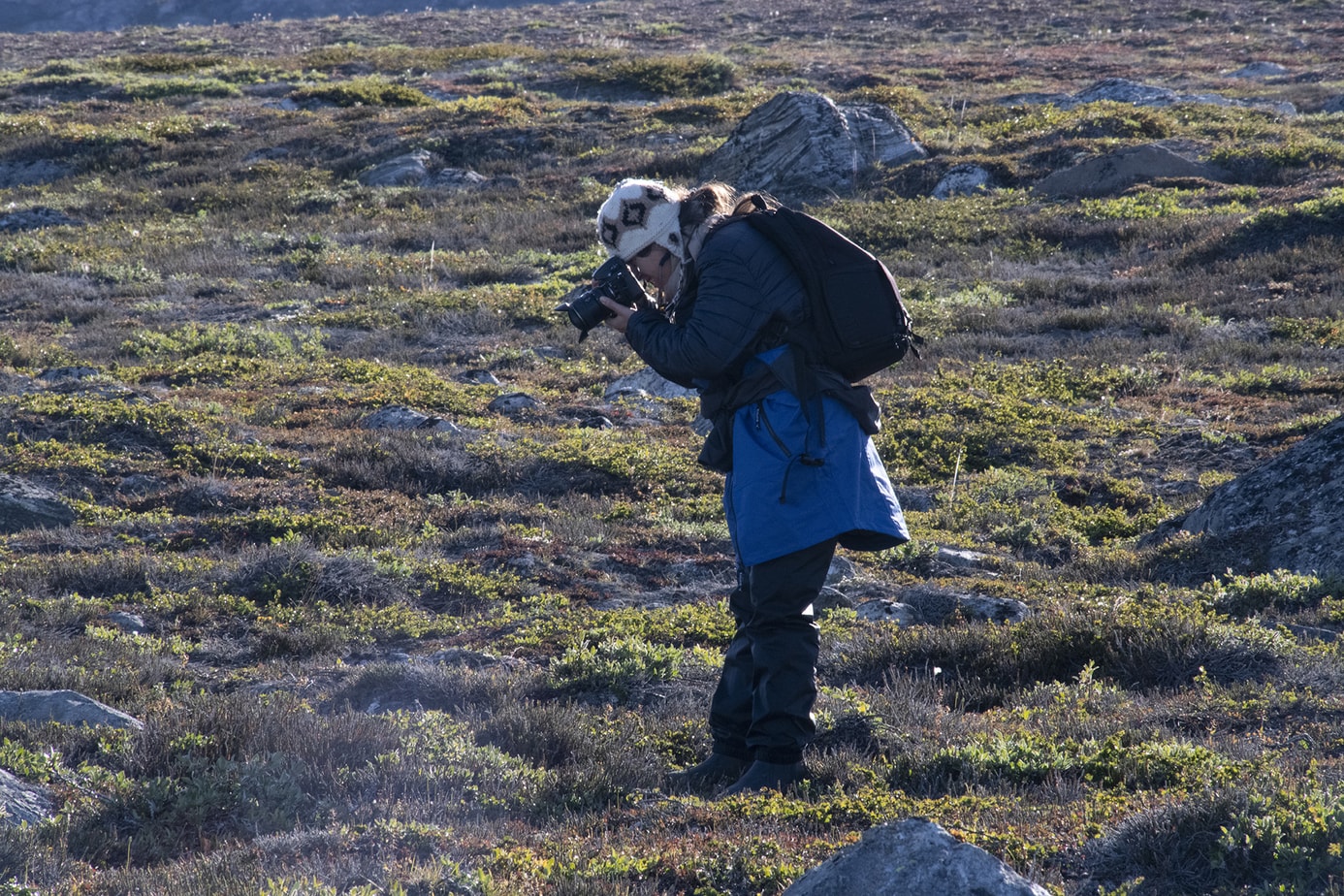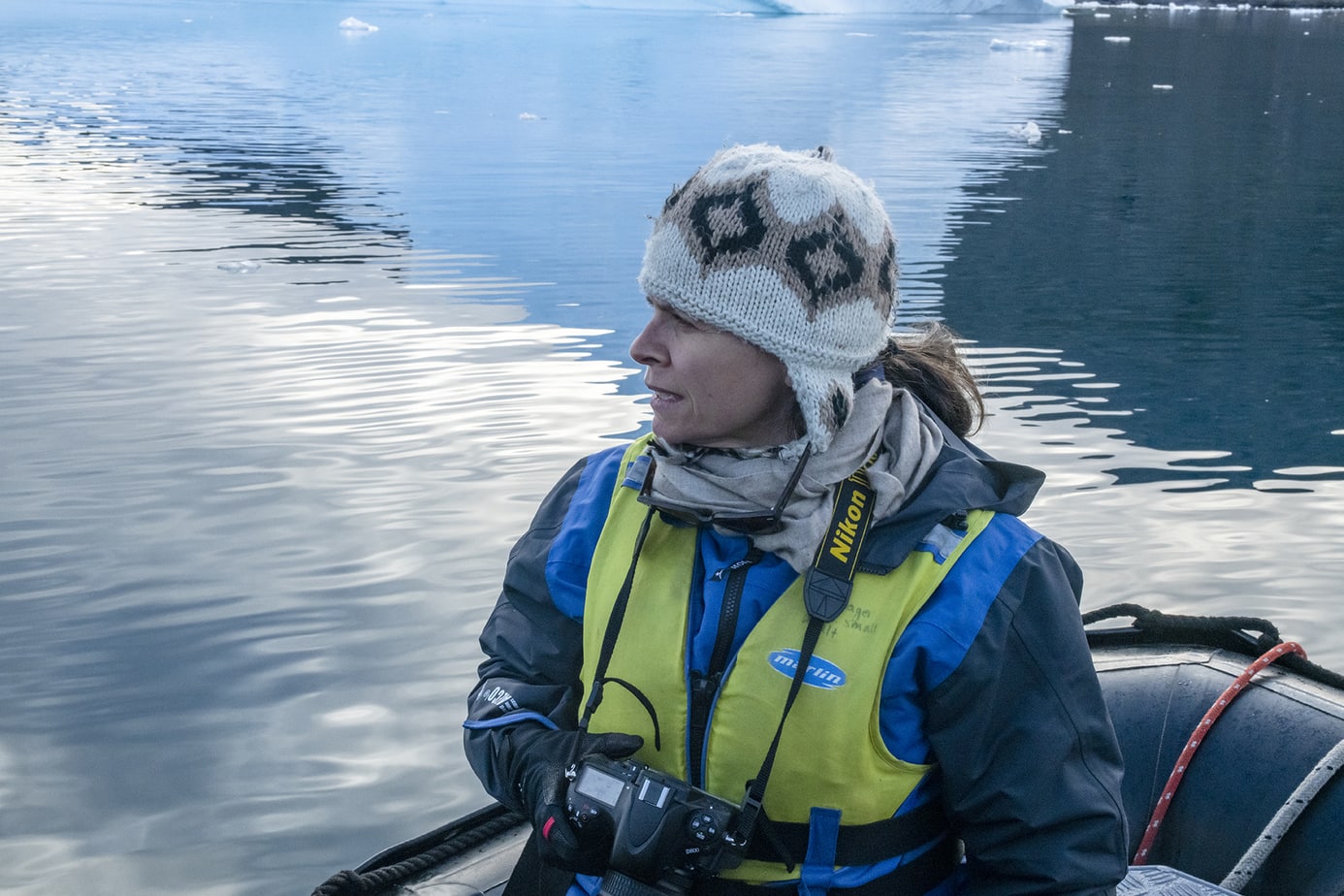CATHERINE NELSON was born in Sydney and studied painting at the College of Fine Art, graduating in 1996. Shortly after, she commenced a career in film and digital media creating special effects for films such as Moulin Rouge and Harry Potter.
In 2008 Catherine returned to own photographic practice but felt that traditional photography had limitations which didn’t truly express her personal and inner experience of the world. This realisation provided the impetus for Catherine to begin working in a way that captured her unique understanding of the environment. She has since travelled to the far corners of South East Asia, Northern Europe, Southern Africa, Central America and outback Australia to find places which represented her vision.
Future Memories 2020 will be Catherine’s sixth solo exhibition at Gallerysmith and marks a decade since her first solo show with us.
We are delighted to share some insights into Catherine’s studio practice in the below Q&A.
GS: In 2010, you developed a series titled Future Memories which captured the essence of place as a complex ecological story. Your upcoming exhibition is Future Memories 2020. Can you tell us why you have revisited this concept?
CN: The main reason is because it applies now more than ever. As I write this, I am in my fourth week of lockdown due to the COVID-19 outbreak. I don’t think anyone can continue to deny the link between deforestation and the situation we find ourselves in. The more we destroy the natural world, the more likely these type of events will take place.Before coronavirus, the biggest universal challenge we faced was climate change. Climate change has a more gradual slide towards disruption and therefore more easily denied, but I believe the eventual outcome could be even more disastrous than this brutal pause we are experiencing now. Scientists have been talking about a point of no return for some years – a state of complete unpredictability, hence the series title Future Memories.
I wanted to highlight what we have now and what we cannot take for granted anymore – or they will become the memories of our future. We are nature, so our ability to destroy it is a self-destructive act. The Corona crisis has proven that.
GS: We often explain to our gallery clients that your works are not single shots, but rather, made up of thousands of images and these new works are even richer, more complex and completely wild! Can you tell us a little about the process?
CN: These works are definitely not one photo! My works are made up of thousands of different photos that I combine together using digital collage techniques.
At the various locations I take a lot of photos, both wide and close up, gathering as much material as I can. In one trip, for example, I may take 15,000 photos.
Back at home the process is complex and time consuming. First, I have to re-familiarise myself with the material. Then I need to identify the photos I can use and prep them for the artwork. The final process is like making a jigsaw puzzle but using pieces I create and I only have an impression of the outcome. Gradually, as the work evolves, I start building a dialogue with it, much like painting. This is one of the most enjoyable moments in the process and why I call myself a painter with a camera.
For this new series, due to the higher level of detail, I would say the average time spent creating each work was 6-8 weeks, but that doesn’t include my time traveling to location and shooting, which can takes weeks as well.

GS: Where were these new works shot?
CN: Most of the images for the new works were shot in Costa Rica and the others in Greenland and the Azores. Costa Rica kind of chose me due to a collaboration with a climate change foundation made up of UN climate change lawyers, activists and biologists. Most members of the group are Costa Rican and when trying to create a work for their foundation, I realised I had no jungle material to work with so I decided to go there. It wasn’t a hard decision to make! Pretty much as soon as we landed the camera was out. It was like stepping into an eternal spring. Costa Rica is a tropical hotbed supporting 5% of the world’s biodiversity. The variety of flora and fauna is staggering and I came home with an abundance of material to work with.
In utter contrast to Costa Rica, in Greenland the food chain is very short and very fragile. I was lucky to be a part of a group traveling up the east coast in 2018. Of course in Greenland we saw a lot of ice but I focused my camera on the flora instead. The tundra seen from a distance forms a tapestry of low lying shrubs.

Without trees as reference, the scale of things was hard to comprehend. The light was low and ever present and seemed to bend in unexpected ways, creating other worldly light emanations that were not coming from the sun. One day we saw an arctic rainbow and sailed through it. Greenland is a jewel and an experience that is incomparable to anything I have ever known.
The Azores offered up a third variety of ecology. My partner and I spent our time on the main Island, San Miguel, which is like a garden state. The photos which created the work titled Terra Nostra were taken in the magnificent gardens of the same name. Unlike Costa Rica and Greenland, there is little really wild nature left in the Azores but the cultivated gardens are beautiful and extensive. It is a truly beautiful island, wild in its location right in the middle of the Atlantic.

GS: You have been living in Belgium for ten years now. Describe where you are spending lockdown and how much it has affected your day-to- day life and your studio practice?
Lockdown has been a guilty pleasure for me. It’s business as usual as I work from home and I am currently busy with a large commission for Silky Oaks Lodge in Far Northern Queensland. I try to keep typical working hours, that is, five days a week up to eight hours a day. I find the routine works well for me but I am also very flexible within it. Sometimes the work demands more time in front of the computer and other times it is important to step away. At the moment the streets are quiet and there is a palpable calm.
The great weather is a bonus and we have a little garden with a hammock in which to enjoy it. Belgium is experiencing an early summer which is unusual for this part of the world. The result is that I feel very relaxed and maybe surprisingly, more productive. The only thing I don’t enjoy are the headlines and the grizzly numbers that keep ticking over. Maybe down the line I will feel the financial impact more acutely but as an artist, I am very used to those kinds of ups and downs. You have no choice but to face it if you want to keep doing what you love.
GS: Share with our readers what art means to you?
Art is so many things. At once it’s a reflection of the world and at the same time it does the world’s dreaming. For me, art, whatever form it takes, should be able to reach its audience beyond the mind. There has to be an aspect that is simply felt, something inexplicable. That is the mystery and magic of it. That’s why people will always be interested in it.

